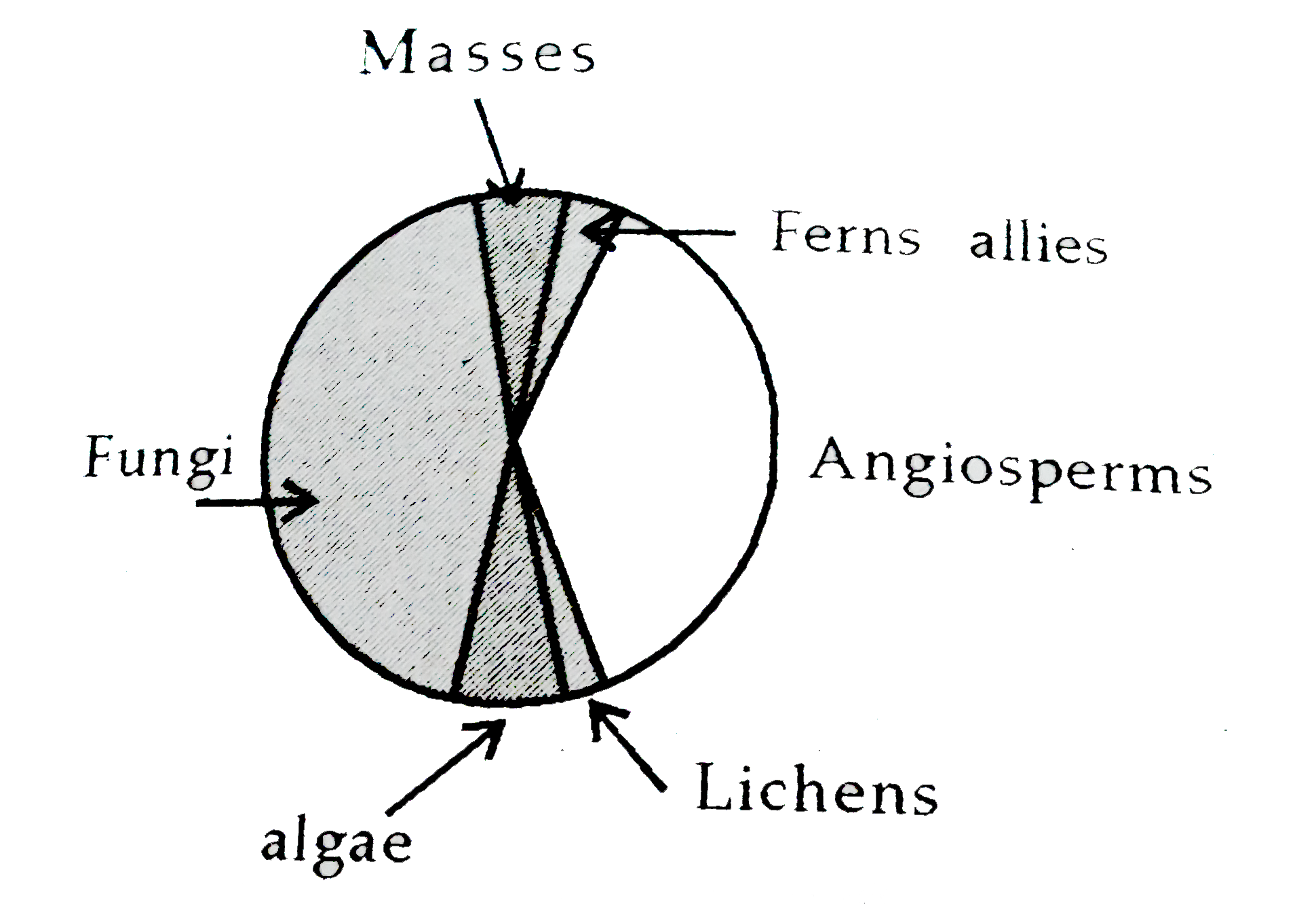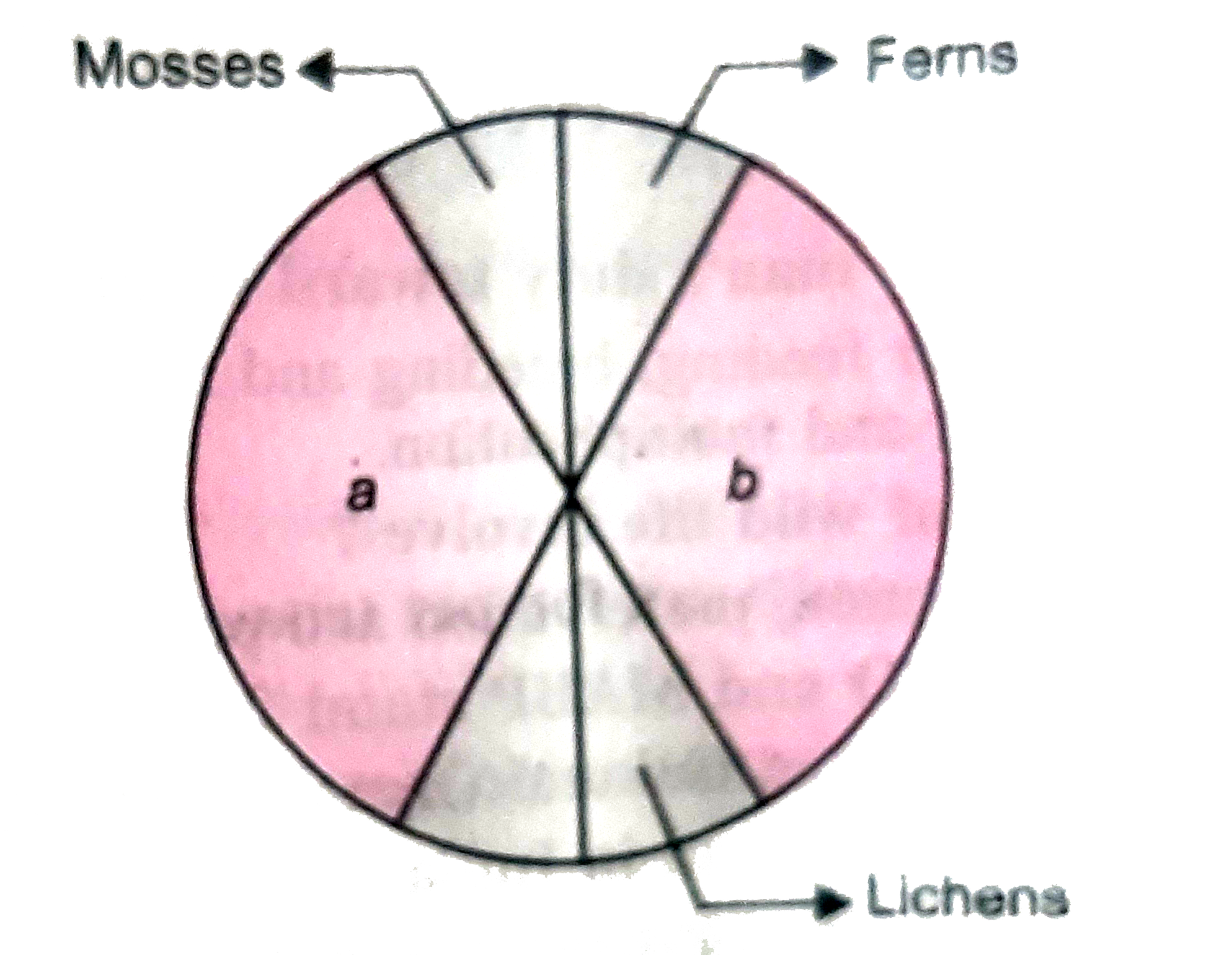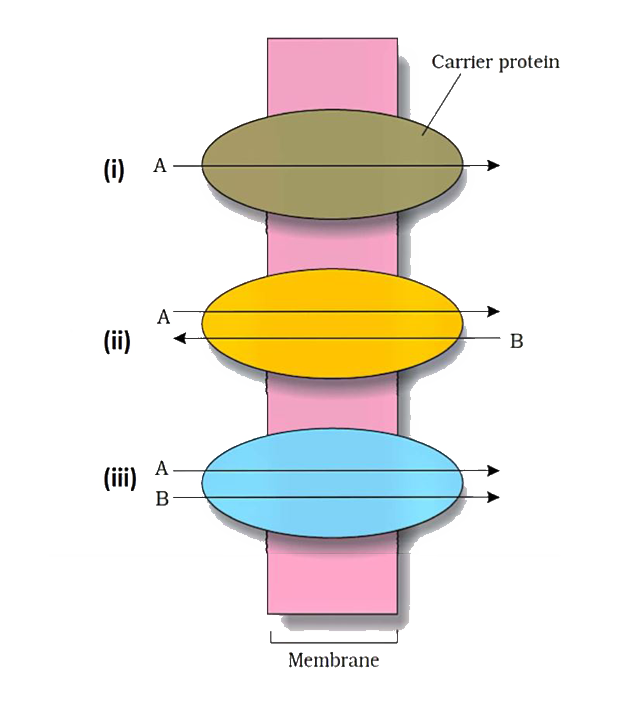Identify the areas labelled (i), (ii), (iii) and (iv) in the pie chart given below representing the biodiversity of plants showing their proportionate number of species of major taxa.
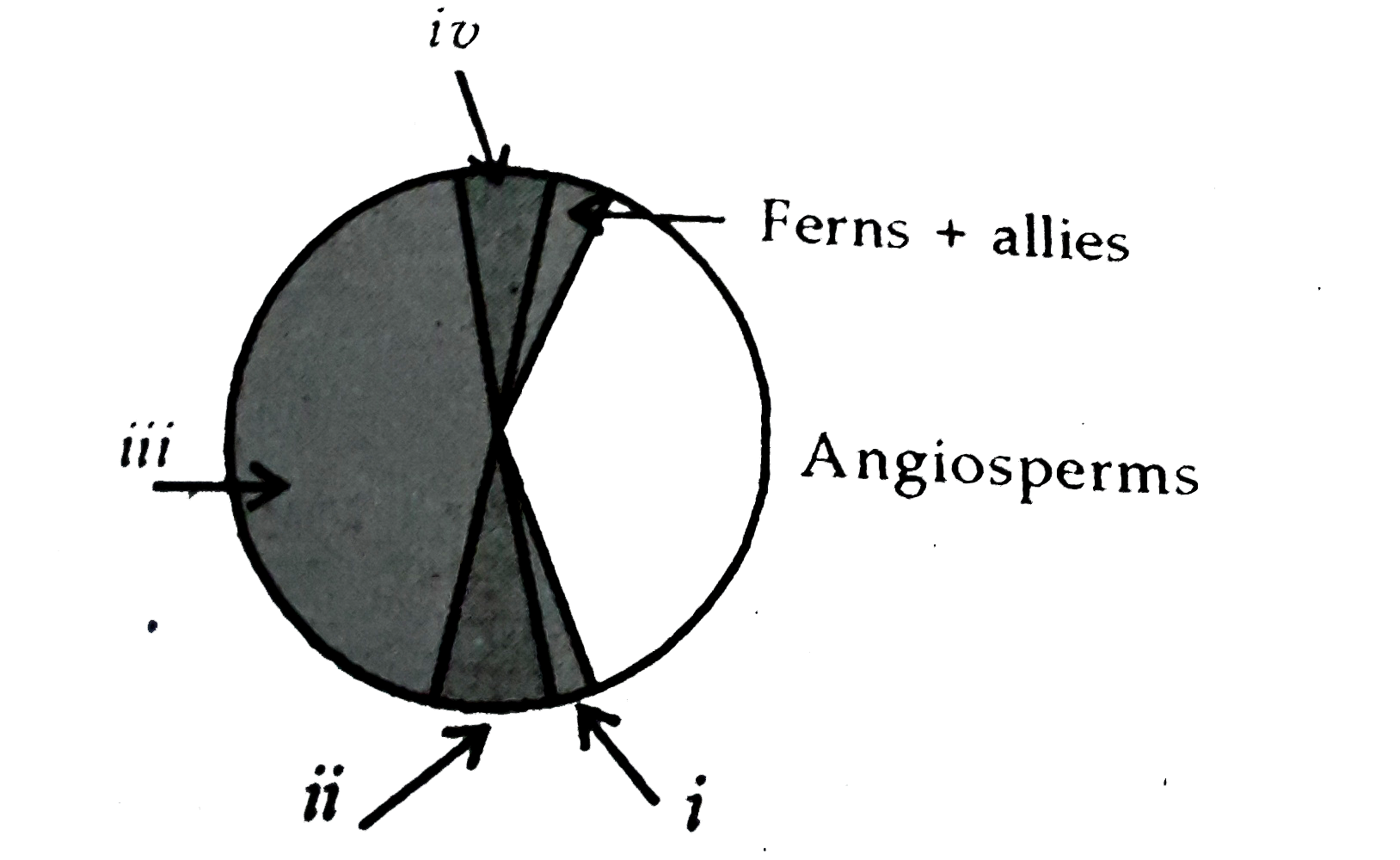
Similar Questions
Knowledge Check
- Question 1 - Select OneAA - Bryophytes, B - GymnospermsBA - Fungi, B - GymnospermsCA - Fungi, B - AngiospermsDA - Algae, B - Angiosperms
- Question 2 - Select One
The given pie diagram represents the proportionate number of species of major taxa of vertebrates. Identify the group A and B.
 AA = Reptiles, B = BirdsBA - Fish, B-BirdsCA-Birds, B - FishDA-Birds, B-Reptiles
AA = Reptiles, B = BirdsBA - Fish, B-BirdsCA-Birds, B - FishDA-Birds, B-Reptiles - Question 3 - Select One
The figure showing nephridial system of earthworm is given here. Identify the types of nephridia labelled as A, B and C from the list (i) to (iii) given below and select the correct option
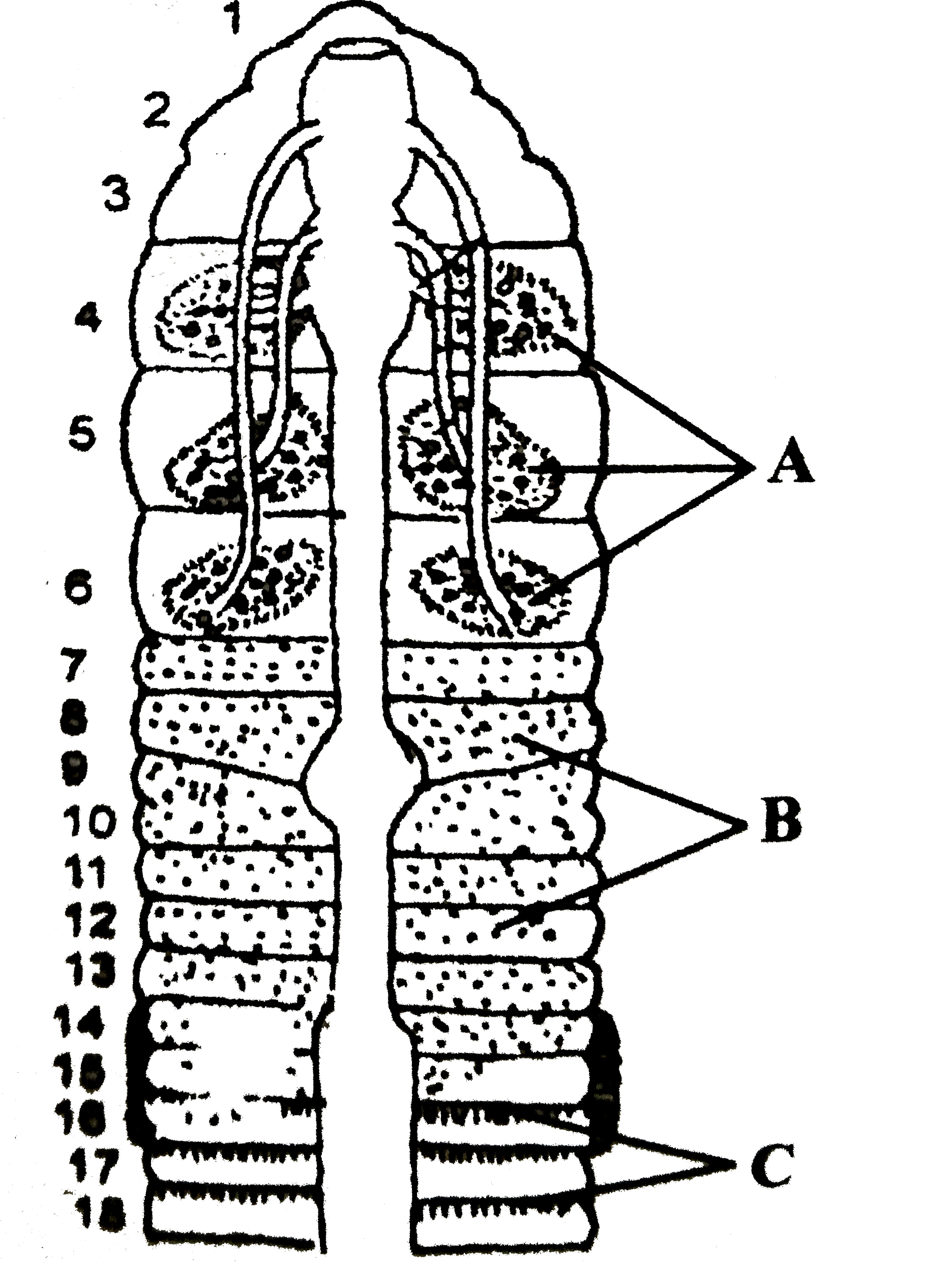
(i) Septal nephridia
(ii) Integumentary nephridia
(iii) Tufts of pharyngeal nephridiaAA B C(ii) (i) (iii)BA B C(iii) (ii) (i)CA B C(ii) (iii) (i)DA B C(i) (ii) (iii)
Identify the structure indicated by labels (i),(ii),(iii) and (iv) and select the correct option.
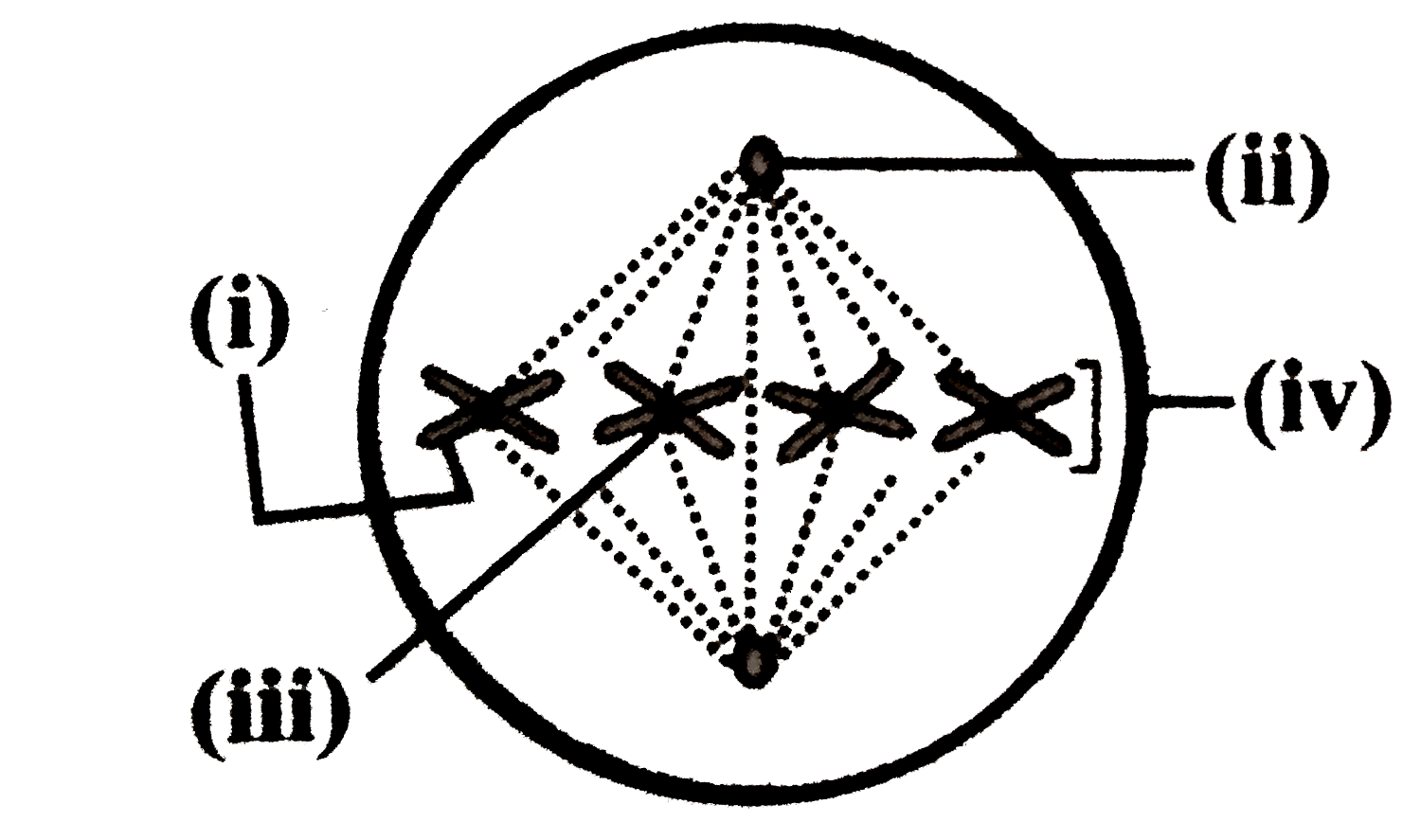 View Solution
View SolutionIdentify 'a' and'b' in the figure given below representing proportionate number of major vertebrate taxa.
View Solution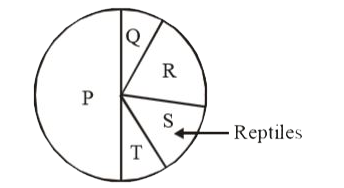
Above given pie chart is showing number of vertebrate species. In above pie chart identify 'R' is representing species of:-View SolutionGiven below are a few statements related to biodiversity. Pick those that correctly describe tha concept of biodiversity
(i) Biodiversity refers to the different species of flora and fauna present in an area.
(ii) Biodiversity refers to only the flora of a given area.
(iii) Biodiversity is greater in a forest.
(iv) Biodiversity refers to the total number of individuals of a particular species living in an area.View SolutionExamine the figures of diploblastic (i) and triploblastic (ii) organisation in animals given below and identify the labelled parts A to D.
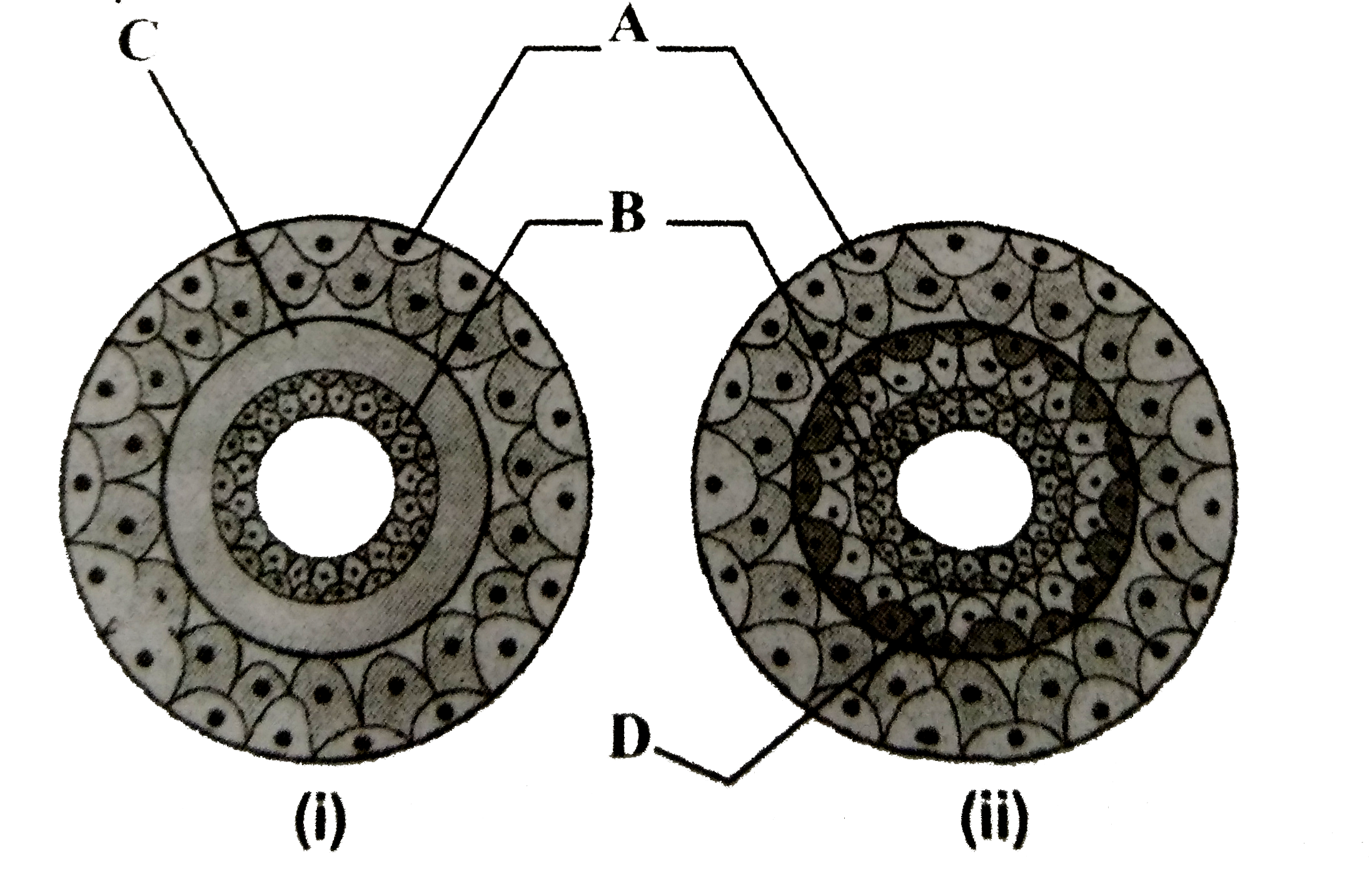 View Solution
View Solution


